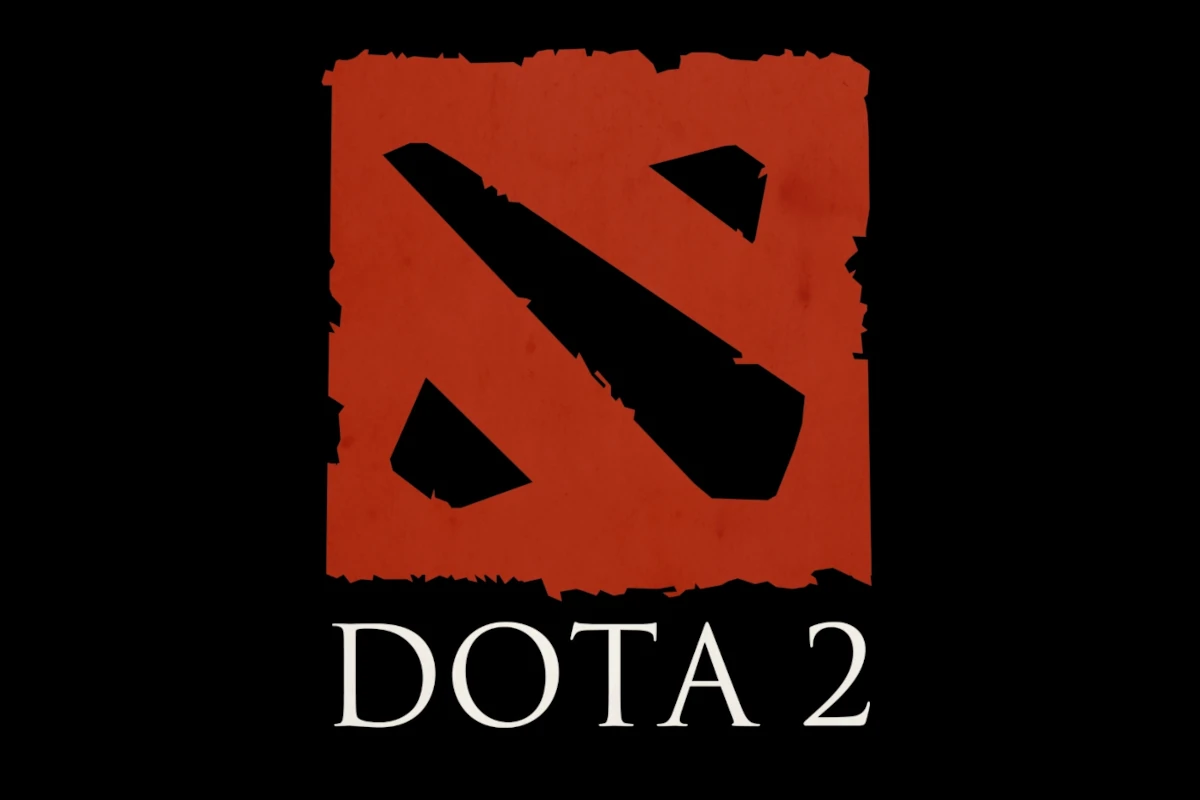To climb the ranks in Dota 2, you need skill, strategy, and continuous learning. Understanding the ranking system, focusing on core gameplay mechanics, and adapting to the ever-changing meta can help you improve your MMR and reach higher ranks. Whether you’re new to the game or an experienced player, there is always room for improvement in the competitive world of Dota 2. In Dota 2, ranks range from Herald to Immortal, each with its own medal and number of stars. Players move up or down based on their performance in matches.
The ranking system uses MMR (Matchmaking Rating), a number that increases when you win and decreases when you lose. The higher your MMR, the better your rank. Players need to play at least 300 games to receive a rank. Ranks help ensure fair matches by grouping players with similar skill levels together, making games more enjoyable and balanced for everyone. As players improve, they can advance through the ranks and face more challenging opponents.

Understanding Dota 2 Ranks: A Comprehensive Guide
Dota 2, one of the most complex and strategic multiplayer online battle arena (MOBA) games, employs a ranking system designed to match players of similar skill levels. This guide delves into the intricacies of Dota 2 ranks, the MMR system, and tips to help you climb the competitive ladder.
What is MMR in Dota 2?
Matchmaking Rating (MMR) is a numerical value representing a player’s skill level. Introduced in 2013, MMR is the foundation for matchmaking in ranked games. Each player’s MMR changes based on match outcomes: winning increases MMR, while losing decreases it. Typically, solo games alter MMR by 30 points per match, while party games affect it by 20 points.

The Evolution of Dota 2 Ranks
In November 2017, Dota 2 transitioned from a simple numerical MMR display to a more visually appealing medal system. This system divides MMR into distinct ranks and sub-ranks, offering a clearer progression path and better representation of a player’s skill.
Dota 2 Ranks and Their MMR Ranges
The current ranking system features eight primary ranks, each with five sub-tiers, except for Immortal, which is unique:
- Herald: 0-769 MMR
- Guardian: 770-1539 MMR
- Crusader: 1540-2309 MMR
- Archon: 2310-3079 MMR
- Legend: 3080-3849 MMR
- Ancient: 3850-4619 MMR
- Divine: 4620-5420 MMR
- Immortal: 5620+ MMR
Each rank reflects a different level of skill and game understanding, with Immortal representing the pinnacle of Dota 2 proficiency, often inhabited by professional players.
Key Concepts in Dota 2 Ranking System
- Core and Support MMR: Players have separate ratings for Core and Support roles, reflecting their proficiency in these areas. The higher of the two MMRs determines the displayed medal.
- Calibration Matches: New and returning players undergo a series of calibration matches to determine their starting MMR each season. Performing well in these matches can significantly impact initial rank placement.
- Rank Confidence and Glicko System: Introduced in recent updates, the Glicko system adjusts MMR gains and losses based on performance and match predictions. Rank confidence decays with inactivity, ensuring that active players maintain more accurate rankings.
Distribution of Dota 2 Ranks
The rank distribution in Dota 2 resembles a pyramid, with the majority of players clustered in the lower to mid ranks. Here’s a snapshot of the rank distribution:
- Herald: 7.34%
- Guardian: 15.68%
- Crusader: 22.49%
- Archon: 22.75%
- Legend: 16.31%
- Ancient: 8.94%
- Divine: 4.58%
- Immortal: 1.91%
This distribution highlights the competitive nature of climbing the ranks, with fewer players reaching the highest tiers.
Tips to Increase Your Dota 2 Rank
- Master the Fundamentals: Focus on last-hitting, positioning, and basic game mechanics. Consistent improvement in these areas is crucial, especially for players in lower ranks.
- Specialize and Adapt: While it’s beneficial to specialize in a few heroes or roles, adaptability is key. Understanding multiple roles and heroes allows for better team compositions and counter-picks.
- Communication and Teamplay: Effective communication can drastically improve team coordination. Use voice chat or in-game commands to strategize with your team.
- Map Awareness and Vision Control: Regularly check the minimap and place wards to gain vision. Controlling vision helps in predicting enemy movements and setting up ganks.
- Analyze and Learn: Review your games to understand mistakes and areas for improvement. Watching professional matches can also provide insights into advanced strategies and meta trends.
- Stay Updated with the Meta: Keep up with patch notes and meta shifts. Adapting to new strategies and hero buffs/nerfs is essential for maintaining a competitive edge.
Recalibration and MMR Reset
At the start of each ranked season, players have the opportunity to recalibrate their MMR. This process involves ten calibration matches, during which MMR changes are more volatile based on performance. A successful recalibration can result in a higher initial rank for the season.
Ascending the Ladder: A Closer Look at Dota 2 Ranks
Navigating the Ranked System:
Climbing the ranked ladder in Dota 2 is a rewarding yet challenging journey. Understanding the ranking system’s nuances, MMR dynamics, and effective strategies can significantly impact your progress. By mastering fundamental skills, adapting to the ever-changing meta, and fostering teamwork, you can gradually ascend the ranks and achieve your desired level of competitive play.
The Road to Immortal: A Long and Winding Path
Reaching the coveted Immortal rank is a testament to exceptional skill and dedication. It requires a deep understanding of game mechanics, hero matchups, and team dynamics. Immortal players often exhibit exceptional map awareness, decision-making, and mechanical prowess. Aspiring to join their ranks necessitates consistent practice, learning from both successes and failures, and a willingness to adapt to the evolving meta.
Rank Decay and Maintaining Your Position
To ensure the accuracy of rankings, Dota 2 incorporates rank decay. Inactivity in ranked matches for a certain period can lead to a gradual decrease in MMR. This encourages players to stay active and engaged in competitive play. The Glicko system further refines this process by considering recent performance and match predictions, leading to more dynamic MMR adjustments.
The Importance of Calibration
Calibration matches provide a crucial opportunity for players to establish their initial rank each season. These matches are particularly significant for new players or those returning after a break. Performing well during calibration can propel you to a higher starting rank, giving you a head start in your climb towards higher tiers.
A Competitive Landscape: The Dota 2 Rank Distribution
The distribution of Dota 2 ranks reflects the competitive nature of the game. With the majority of players concentrated in the lower to mid ranks, climbing the ladder becomes increasingly challenging as you progress. This distribution also emphasizes the importance of continuous learning and adaptation to stay ahead of the competition.
Tips for Climbing the Ranks
- Focus on Fundamentals: Mastering last-hitting, positioning, and map awareness are essential skills that lay the groundwork for success in Dota 2.
- Specialize and Adapt: While specialization in specific roles or heroes can be beneficial, remaining adaptable allows for greater flexibility in team compositions and counter-picks.
- Communicate Effectively: Clear and concise communication is crucial for coordinating with teammates and executing successful strategies.
- Control Vision: Placing wards strategically and gaining map vision enables you to anticipate enemy movements and make informed decisions.
- Analyze and Learn: Reviewing your games and identifying areas for improvement is a valuable tool for growth.
- Stay Updated: Keeping up with patch notes and understanding the current meta trends allows you to adjust your strategies and hero choices accordingly.
Key Takeaways
- Dota 2 uses medals and stars to show player ranks
- MMR determines a player’s rank and changes with wins and losses
- Ranks create fair matches by grouping similar skill levels
Understanding Dota 2 Ranks and MMR System
Dota 2 uses a complex ranking system to match players of similar skill levels. This system includes MMR values, medals, and tiers that reflect a player’s ability.
MMR and Calibration Process
MMR stands for Matchmaking Rating. It’s a number that shows how good a player is at Dota 2. New players start with calibration matches. These games help decide their starting MMR.
The game looks at how well a player does in these matches. It checks things like kills, deaths, and team play. After 10 games, the player gets their first MMR score.
MMR goes up when players win games. It goes down when they lose. The amount it changes depends on the skill of both teams. Beating a stronger team gives more MMR than beating a weaker one.
Medals and Their Tiers
Dota 2 has eight main ranks:
- Herald
- Guardian
- Crusader
- Archon
- Legend
- Ancient
- Divine
- Immortal
Each rank except Immortal has five tiers. Herald 1 is the lowest, while Divine 5 is just below Immortal. Players can see their medal in the game. It changes as their MMR goes up or down.
The MMR needed for each rank changes over time. But in general, there’s about 500-600 MMR between each full rank. For example, a player might need 2000 MMR for Crusader 1 and 2500 for Archon 1.
Rank Distribution and Updates
Valve, the company behind Dota 2, updates the ranking system from time to time. They want to keep it fair and accurate. These updates might change how MMR is calculated or how medals are given out.
The rank distribution in Dota 2 looks like a bell curve. Most players are in the middle ranks, like Crusader and Archon. Fewer players are at the very low or very high ranks.
Immortal rank is special. It’s for the top players in each region. These players get a number showing their exact position on the leaderboard. The top 100 Immortal players are often pro gamers or streamers.
Dota 2 also has seasons. At the start of each season, players’ ranks might be adjusted. But their MMR usually stays about the same. This helps keep the ranking system fresh and competitive.
Advanced Insights on Dota 2 Ranking
Dota 2’s ranking system goes beyond basic MMR. It involves smart tactics, good teamwork, and knowing regional differences. These factors can help players climb the ranks faster.
Strategies to Gain MMR
Picking the right heroes is key to winning more games. Players should focus on a small group of heroes they’re good at. This helps them get better faster.
Playing at the right times can also boost MMR. Games late at night often have fewer skilled players. This can lead to easier wins.
Watching replays of top players is another useful tactic. It shows what pro gamers do differently. Players can copy these moves to improve their own gameplay.
Learning to last hit creeps well is crucial. It gives more gold and experience. This leads to stronger items and levels, making it easier to win fights.
Role of Player Communication and Team Dynamics
Good communication is vital in Dota 2. Teams that talk well often win more games. Using voice chat or quick messages helps coordinate attacks and defenses.
Being positive can improve team spirit. This makes players work together better. Angry comments can make teammates play worse.
Knowing when to lead and when to follow is important. Some games need a strong captain. Others work best when everyone shares ideas.
Adapting to teammates’ play styles is helpful. Some players are aggressive, others defensive. Matching their style can create better teamwork.
Understanding Regional Leaderboards
Each region in Dota 2 has its own top players list. The best 100 players appear on these boards. Getting on this list is a big achievement.
Different regions have different play styles. China is known for farming and late-game tactics. Europe often has more aggressive early game moves.
The Americas leaderboard includes North and South America. Southeast Asia has its own board with many talented players.
Top spots on these boards change often. Pro players and high-ranked pub stars compete for the number one rank. This keeps the competition exciting.
Frequently Asked Questions
Dota 2’s ranking system has many parts. Players often have questions about how it works. Here are answers to some common queries about ranks in Dota 2.
How is the ranking system structured in Dota 2?
Dota 2 uses medals to show player ranks. There are 8 ranks in total. Each rank has 5 tiers. The ranks go from Herald to Immortal. A player’s medal reflects their skill level. It’s based on their Match Making Rating (MMR).
What are the requirements to unlock ranked matchmaking?
New players must play about 100 hours before they can start ranked games. This helps them learn the basics first. They also need to link a phone number to their account. These rules aim to stop cheating and smurfing in ranked games.
How does the MMR distribution vary across different ranks?
MMR ranges differ for each rank. Most players fall between 1,500 and 5,000 MMR. Herald rank starts at 0 MMR. Top players can have over 10,000 MMR. The exact MMR needed for each rank can change over time.
What does the tier list of Dota 2 ranks look like?
The Dota 2 rank list from lowest to highest is:
- Herald
- Guardian
- Crusader
- Archon
- Legend
- Ancient
- Divine
- Immortal
Each rank except Immortal has 5 tiers within it.
How often is the Dota 2 leaderboards updated?
Dota 2 updates its leaderboards daily. This shows the top players in each region. Only Immortal rank players appear on these boards. Players must play games often to stay on the list.
What are the team rankings, and how are they determined?
Team rankings are for pro Dota 2 teams. They’re based on results in big tournaments. Valve, the game’s maker, doesn’t run an official ranking system. Fan sites and esports groups often make their own team rankings. These look at recent match results and tournament placings.







